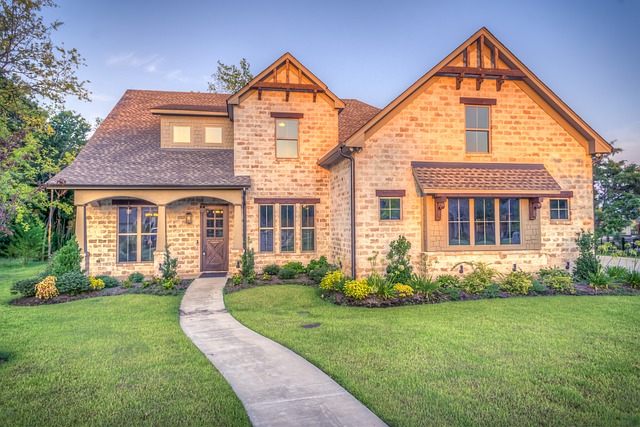Pet-Friendly Landscaping: Creating Safe, Engaging Spaces for Dogs
Creating dog-friendly landscapes goes beyond aesthetics, focusing on safe, natural environments that…….
Introduction
The concept of pet-friendly-landscaping has become increasingly significant as pets are no longer merely considered animals but cherished members of the family. This article delves into the intricacies of designing outdoor spaces that cater to both human and animal needs, offering a comprehensive understanding of its importance, benefits, and the global impact it’s having on how we interact with our environment. Readers will learn about the core components of pet-friendly-landscaping, economic considerations, technological advancements, policy frameworks, and more, equipping them with knowledge to enhance their own outdoor spaces for pets.
Understanding Pet-Friendly-Landscaping
Pet-friendly-landscaping refers to the practice of designing and maintaining outdoor spaces that are safe, stimulating, and enjoyable for both humans and their pets. This approach integrates elements such as pet paths, designated bathroom areas, secure fencing, and pet-safe plants into the landscape. Historically, landscaping has focused on aesthetic appeal and functionality for homeowners, but with the rise of pet ownership, the focus has expanded to include the well-being of animals. Pet-friendly-landscaping is a testament to the evolving relationship between humans and pets, emphasizing shared spaces that foster bonding and healthier lifestyles.
Global Impact and Trends
The influence of pet-friendly-landscaping is evident across various regions, with different cultures adapting the concept to suit their climates and pet care traditions. In North America and parts of Europe, this trend reflects a pet humanization phenomenon, where pets are afforded the same level of comfort and luxury as their owners. Meanwhile, in Asia, the trend aligns with growing urbanization and smaller living spaces, necessitating innovative solutions for pet well-being in limited areas. Globally, an increase in pet ownership, coupled with a focus on pet health and happiness, has spurred a demand for pet-friendly spaces, leading to a burgeoning industry.
Economic Considerations
The economic implications of pet-friendly-landscaping are multifaceted, influencing everything from local landscaping businesses to the global market for pet products. Market dynamics indicate a growing niche for landscapers specializing in pet-friendly designs, while investment patterns show a trend towards sustainable and pet-centric properties. These developments have a positive impact on economic systems by creating jobs, stimulating innovation, and enhancing property values.
Technological Advancements
Technology has played a pivotal role in advancing pet-friendly-landscaping. Innovations such as smart fencing, GPS tracking collars, and automated irrigation systems cater to the safety and maintenance of pet spaces. These advancements not only enhance the pet experience but also provide homeowners with peace of mind. Future potential includes the integration of AI for personalized landscapes that adapt to a pet’s preferences and needs.
Policy and Regulation
The governance of pet-friendly-landscaping is shaped by policies and regulations that ensure the safety, health, and welfare of pets. These frameworks cover aspects such as zoning laws, pet waste management, and landscaping practices that protect both pets and ecosystems. Compliance with these regulations is crucial for the sustainable growth of pet-friendly spaces and for ensuring that landscaping does not negatively impact local biodiversity.
Challenges and Criticisms
Pet-friendly-landscaping faces challenges such as maintaining ecological balance, accommodating diverse pet needs, and addressing the potential risks of pesticides and toxic plants. Critics argue that excessive focus on pets may overlook environmental concerns. To overcome these issues, a balanced approach that considers both pet well-being and environmental sustainability is necessary. Actionable solutions include the use of eco-friendly materials, native plants, and proper waste disposal systems.
Case Studies
Several case studies highlight the successful implementation of pet-friendly-landscaping. One notable example is a residential community in California that features a communal pet park with agility equipment, shaded areas, and pet water fountains. Another case is an urban apartment complex with a rooftop dog run and pet-safe green spaces. These studies offer valuable lessons on design, maintenance, and community engagement, emphasizing the importance of thoughtful planning in creating inclusive outdoor environments.
Future Prospects
The future of pet-friendly-landscaping is poised for growth, with potential expansion into new markets and the integration of cutting-edge technologies. Emerging trends include the use of therapeutic landscapes for pets, biophilic design elements that enhance well-being, and community initiatives that foster social connections among pet owners. Strategic considerations for the future involve addressing sustainability, adapting to changing demographics, and ensuring that the human-animal bond remains a central focus of landscape design.
Conclusion
Pet-friendly-landscaping represents a significant evolution in how we approach outdoor spaces, one that recognizes the importance of pets in our lives. This comprehensive overview has explored its multifaceted nature, from economic implications to technological advancements, and from policy considerations to real-world applications. The relevance of pet-friendly-landscaping is undeniable, and its continued development promises to enhance both the human and animal experience in our increasingly urbanized world.
FAQs
What is pet-friendly-landscaping?
Pet-friendly-landscaping involves designing outdoor spaces that are safe, stimulating, and enjoyable for pets, while also being aesthetically pleasing and functional for their owners.
Why is pet-friendly-landscaping important?
It’s important because it recognizes the role of pets in our lives and promotes a healthier, happier life for both humans and their pets by creating shared spaces that cater to their needs.
How has technology impacted pet-friendly-landscaping?
Technology has enabled smarter, safer, and more efficient landscapes through innovations like automated irrigation systems, GPS tracking collars, and smart fencing designed to keep pets secure.
What are some challenges faced by pet-friendly-landscaping?
Challenges include ensuring ecological balance, accommodating diverse pet needs, managing pet waste responsibly, and addressing potential health risks from toxic substances in landscapes.
Where is pet-friendly-landscaping most popular?
It is most popular in regions with high pet ownership rates, such as North America and parts of Europe, but it is gaining global traction as urbanization increases and the human-animal bond becomes more recognized.

Creating dog-friendly landscapes goes beyond aesthetics, focusing on safe, natural environments that…….

Creating a beautiful, pet-safe garden or indoor space requires careful selection of non-toxic plants…….

Creating a pet-safe outdoor space involves several steps including identifying and mitigating risks,…….

Creating a pet-safe outdoor space enhances the well-being of pets and their owners by offering a sec…….

Creating a pet-friendly landscape goes beyond aesthetics, focusing on safety, enjoyment, and accessi…….

Pet-friendly landscaping transforms outdoor spaces into engaging havens for pets and owners, promoti…….

Creating a pet-safe outdoor space involves identifying and mitigating hazards, incorporating non-tox…….

Designing a pet-friendly yard involves creating diverse, engaging spaces with safe terrain, shade, w…….